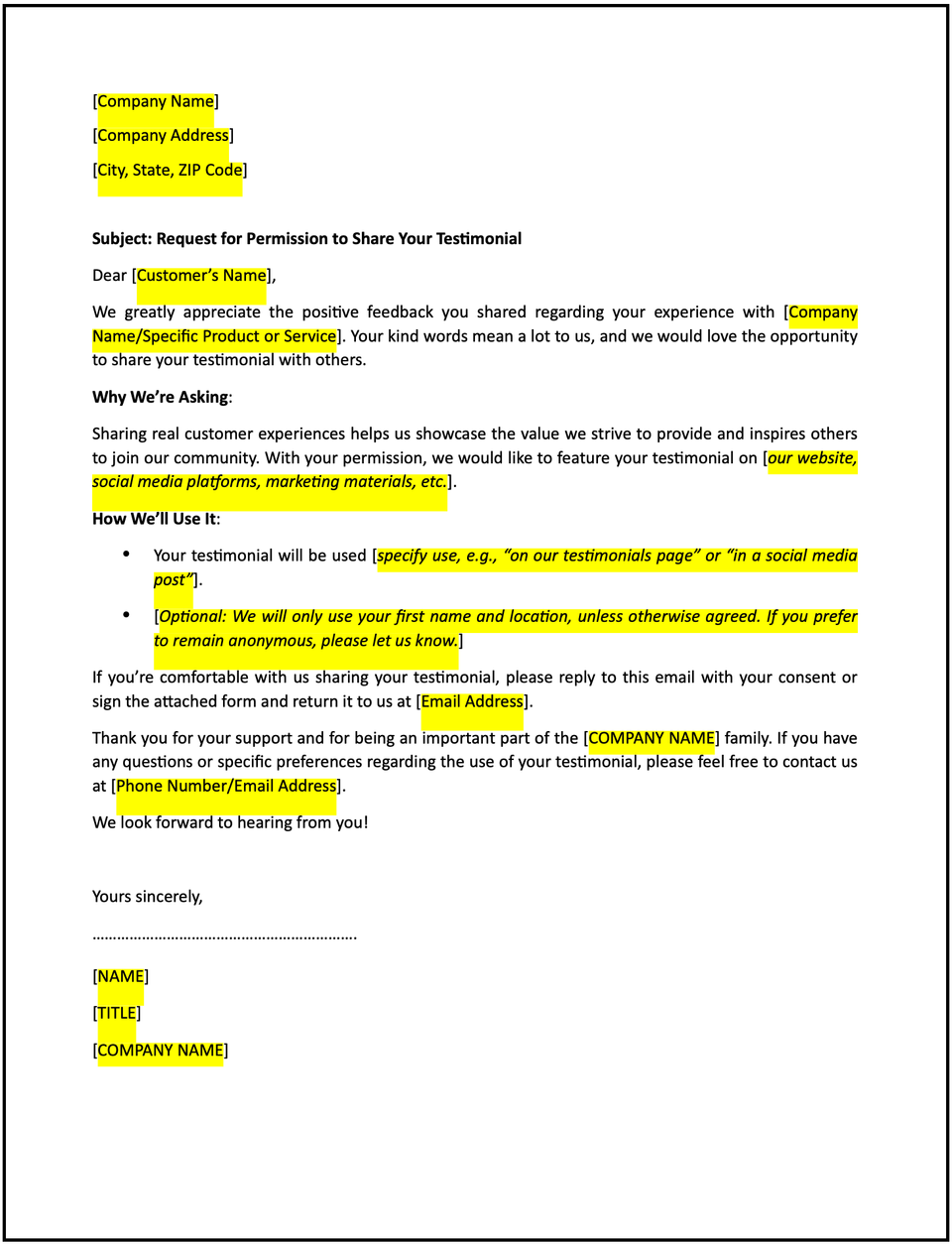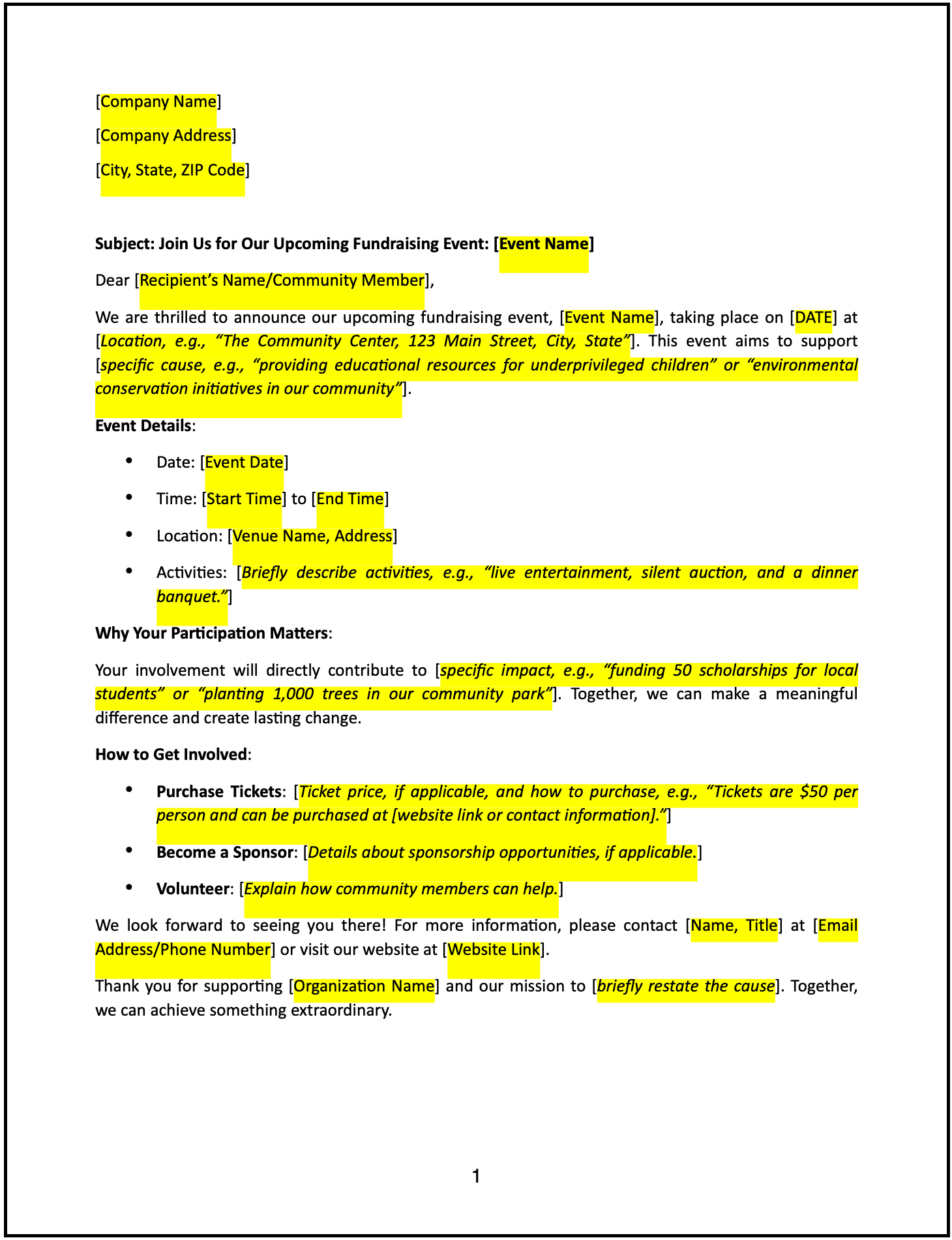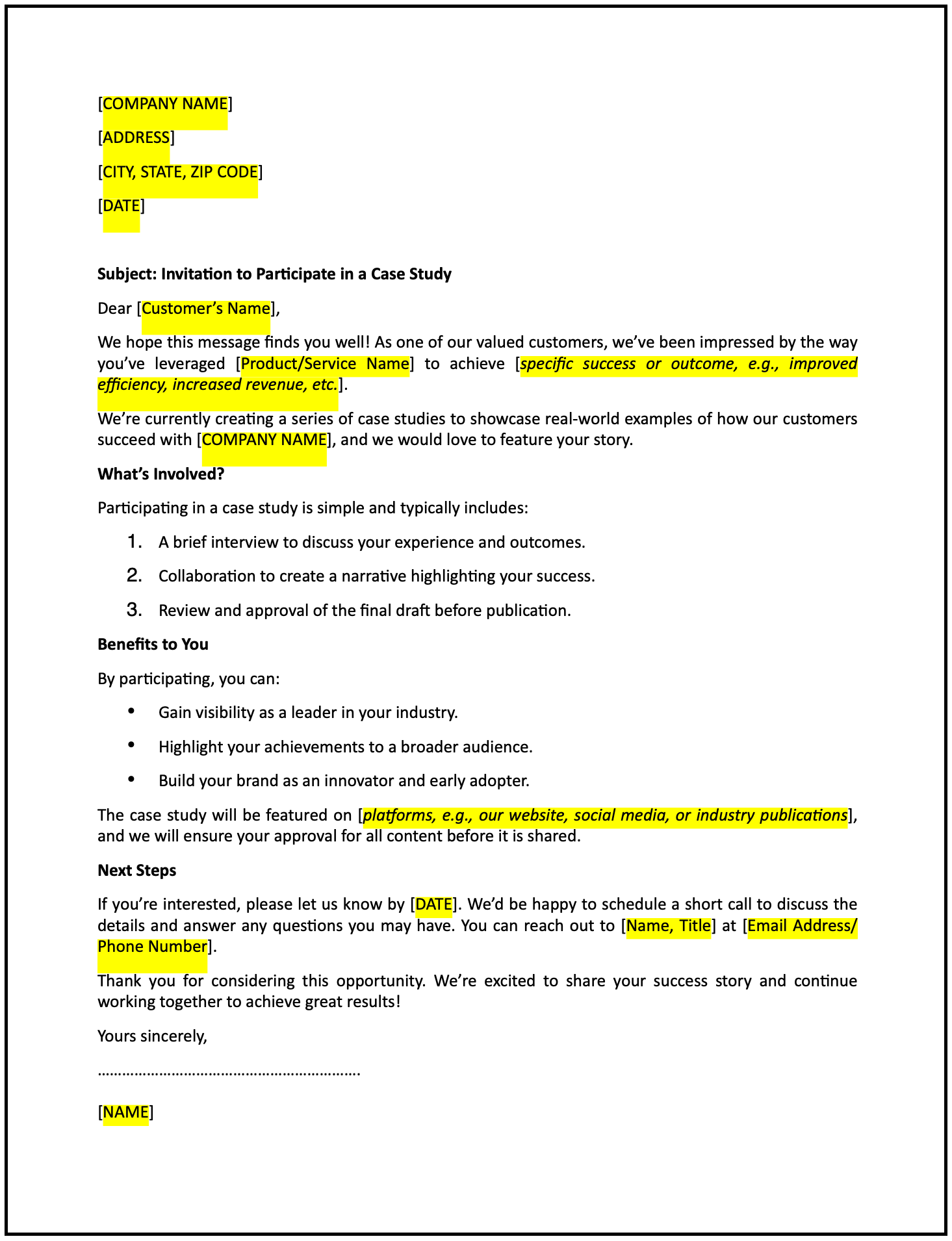Request for consent to share customer testimonial letter: Free template

Request for consent to share customer testimonial letter
Requesting consent to share a customer testimonial is a professional way to showcase positive feedback while respecting the customer’s privacy and preferences. This letter provides a clear and respectful approach to seeking permission to use their testimonial for promotional purposes.
How to use this request for consent to share customer testimonial letter
- Open with appreciation: Begin by thanking the customer for their positive feedback and for choosing your product or service.
- Reference the testimonial: Clearly identify the testimonial you’d like to share, ensuring the customer knows which feedback you’re referring to.
- Explain the purpose: Outline how you intend to use the testimonial, such as on your website, social media, or marketing materials.
- Assure privacy: Reassure the customer that their testimonial will only be shared with their explicit consent, and clarify how their name or details will appear (e.g., initials, first name only).
- Provide instructions: Include details on how the customer can grant consent, such as replying to the email, signing a form, or clicking a link.
- Maintain a professional tone: Ensure the letter is respectful, clear, and customer-focused.
- Invite questions: Encourage the customer to reach out with any questions or concerns about the request.
Benefits of using a request for consent to share customer testimonial letter
This letter template ensures a structured and professional way to request permission while fostering goodwill and maintaining trust. Here’s how it helps:
- Demonstrates professionalism: A thoughtful request reflects positively on your brand’s values and customer care.
- Builds trust: Seeking consent shows respect for the customer’s privacy and preferences.
- Enhances marketing: Sharing testimonials with permission helps attract and reassure potential customers.
- Promotes engagement: Inviting customers to be part of your promotional efforts strengthens relationships.
- Ensures compliance: Securing explicit consent reduces legal risks and aligns with privacy regulations.
Tips for writing an effective request for consent to share customer testimonial letter
- Be specific: Clearly reference the testimonial you’d like to share and the platforms where it will appear.
- Use professional language: Maintain a respectful and appreciative tone to encourage a positive response.
- Emphasize customer value: Highlight how their testimonial can inspire or help others.
- Reassure privacy: Clarify how their information will be used and ensure they feel comfortable.
- Keep it concise: Focus on the key points without overwhelming the customer with unnecessary details.
Frequently asked questions (FAQs)
Q: What details should I include in this letter?
A: Include the specific testimonial, the intended use, how their information will appear, and instructions for granting consent.
Q: Should I offer an incentive for granting consent?
A: While not required, offering a small incentive, such as a discount or gift card, can encourage participation.
Q: Who typically receives this letter?
A: Send the letter to customers who have provided positive feedback or reviews about your product or service.
Q: How formal should this letter be?
A: The tone should be professional yet friendly and appreciative to foster a positive response.
Q: When should this letter be sent?
A: Send the letter shortly after receiving the testimonial to ensure it is still fresh in the customer’s mind.
Q: Can this letter include an example of how the testimonial will appear?
A: Yes, including a preview of how their testimonial will look can reassure the customer and increase consent likelihood.
Q: Is acknowledgment from the customer required?
A: Yes, explicit consent is necessary to share testimonials, and clear acknowledgment ensures compliance.
This article contains general legal information and does not contain legal advice. Cobrief is not a law firm or a substitute for an attorney or law firm. The law is complex and changes often. For legal advice, please ask a lawyer.


